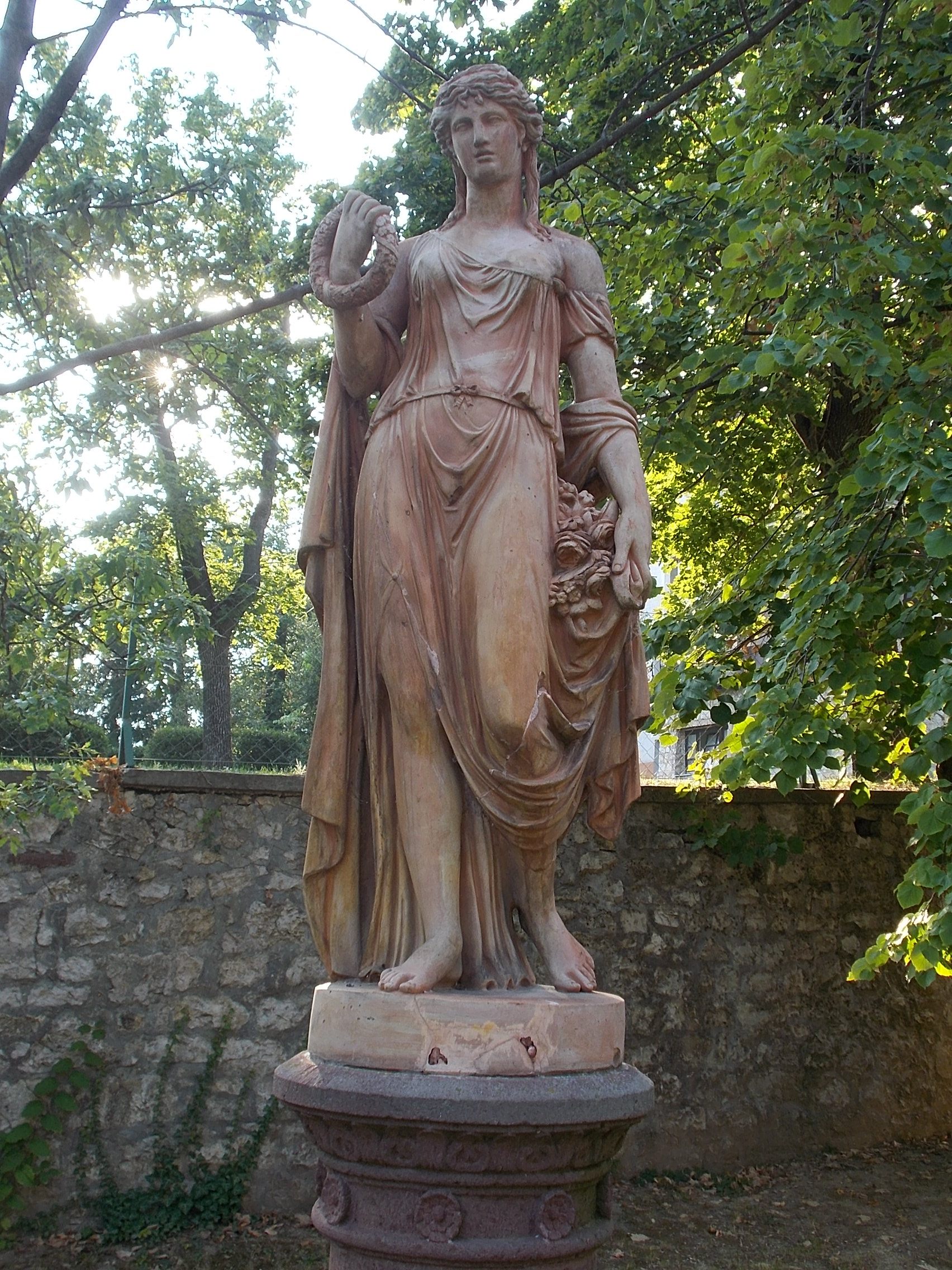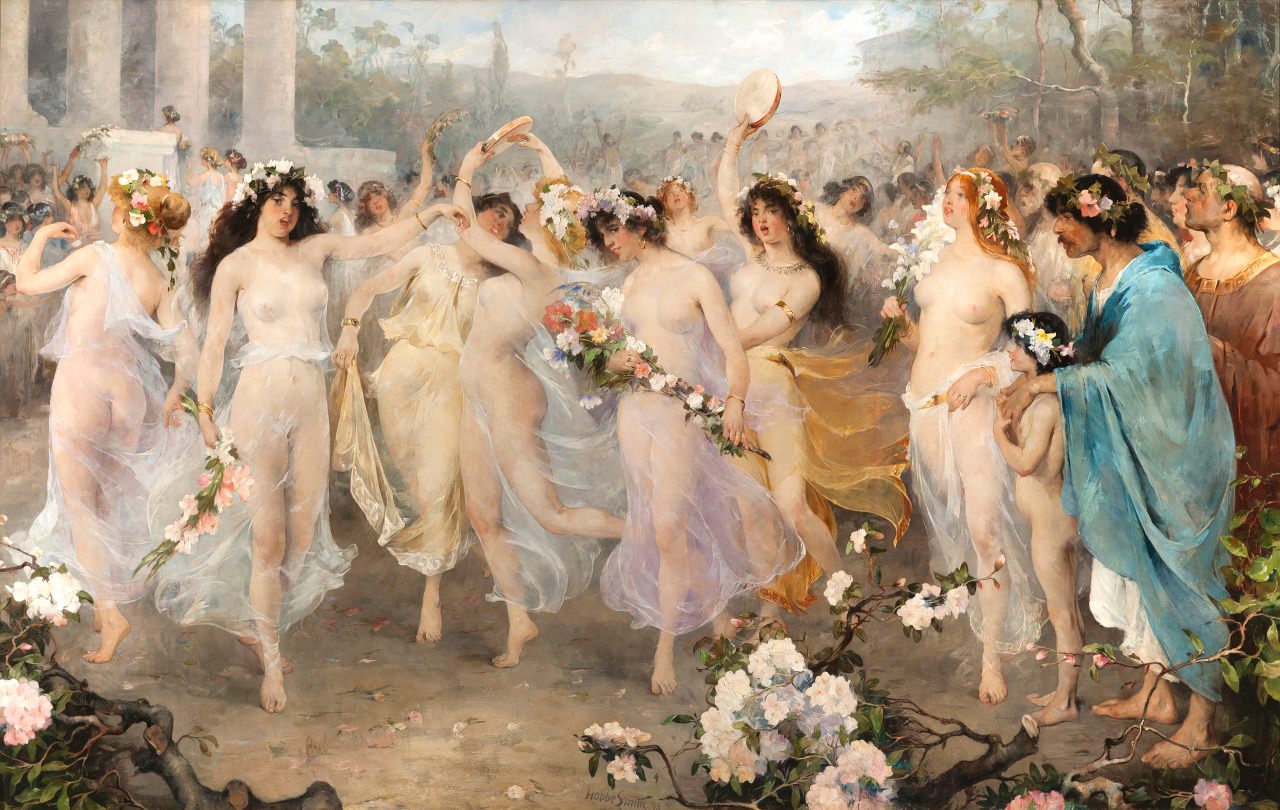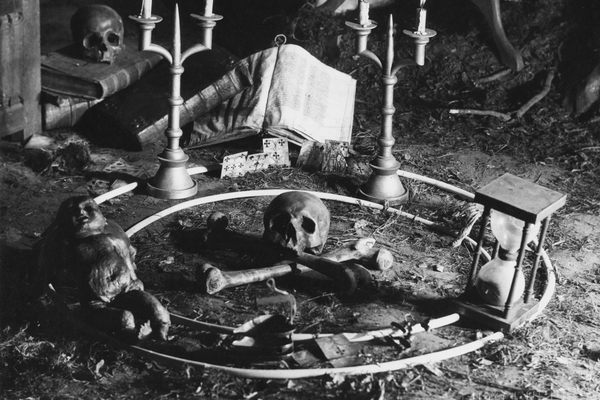Welcome to the Ancient Roman Festival for Sex Work
Floralia was a celebration of spring, flowers, and so-called prostitution.
When many think of Ancient Roman stadiums, gladiators or chariot racing often come to mind. But another type of games took place in such amphitheaters during spring time—ones full of colors, flowers, and sex.
Floralia was a festival that occurred in late April till early May to celebrate the end of winter and honor a fertility goddess—who may or may not have been a “prostitute.” Whatever can be said of the deity, the celebration itself most definitely included sex workers. Along with circus stunts, bunny hunts, mimes, jesters, dancing, and nudity, the ancient civilization celebrated the season with much licentiousness.
In Roman mythology, Flora is a goddess of fertility and blossoming plants, often associated with youth and the coming of spring. Her origins are intertwined with the Greek nymph known as Chloris, who is taken by Zephyrus, god of the west wind. Following their wedding, she becomes the flower goddess, Flora. To the Ancient Romans, Flora was considered one of the flamines minores, minor deities who were given a cult and assigned a flamen, or priest.

That’s the mythology, though at least one scholar endorsed a different notion. The 3rd-century writer Lactantius claimed that Flora was not a deity at all, but rather a regular Roman prostitute who had been elevated to the realm of divine beings. But historian Jason R. Abdale says that Lactantius was the only person to ever make this claim, and that as a “hardline Christian… saying [Flora] wasn’t a goddess was likely an attempt to smear aspects of ancient Roman polytheism to persuade people to come over to the ‘proper’ way of doing things.” Abdale continues on to say, “from the other reports that we have, Flora was some sort of divine being.”
After a period of brutal weather damaged the majority of crops in 240 BC, the country was facing the threat of famine. In an attempt to avoid devastation, the Roman Senate consulted the Sibylline books, a collection of oracular texts that were deeply regarded in ancient Rome. From the oracle, they heeded the directive to build a temple in honor of Flora and to present her with an abundance of floral and vegetative offerings.

The first Floralia festival therefore took place on April 28, 238 BC in the Temple of Flora, which had just been constructed on the Quirinal Hill, near the Circus Maximus chariot-racing stadium. This premier event was likely a much more modest celebration than it would eventually become. Both men and women adorned themselves and their animals with flower sashes and crowns, and women shed their usual layered clothes in favor of bolder, more revealing dresses that were disavowed the rest of the year.
For several decades after its inception, the Floralia was celebrated only sporadically, at some point almost disappearing entirely for reasons undetermined. But in 173 BC, following another season of severely destructive weather across Italy, the festival was reinstated. This time it became more elaborate and organized, formally running from April 28 to May 3 each year.
The ludi florales, meaning “floral games,” were introduced. These competitive and performative events were held to incentivize voters for future elections. The first few days of the Floralia featured games that were primarily theatrical, with an unabashed air of licentiousness. Among the mimes and jesters prized citywide for their suggestive comic displays, Rome’s female sex workers also participated in the performances to great fanfare and encouragement.

“The rarity of occasions like the Floralia, where the most marginalized of women participated in the public religious life of the city in a very visible way, would have charged the performances with added significance for the performers and the audience both,” writes Molly Pasco-Pranger, Chair and Professor of Classics at The University of Mississippi. These spectacles—that involved miming, dancing, comedy, nudity, and participation from the audience—were indeed charged. In many ways, the Floralia ludi paralleled the more modern art of burlesque.
After days and nights of theatrical antics, the final day of the festival was reserved for circus games. Animals that represented spring and renewal, like rabbits, goats, and deer, were released into the Circus Maximus to be paraded then hunted for sacrifice, while grains and legumes, which were symbols of fertility in the ancient world, were thrown out into a cheering audience.
With the passage of time, the official celebration of Floralia eventually dissolved. Many historians believe this most likely occurred during the 4th century, concurrent with the Constantinian shift and Christian disdain for the salacious nature of the festivities.
Although today Flora is a lesser-mentioned deity in Roman mythology and her festival exists only in history, the colorful sentiment she represents reappears with each passing spring. Every April, it could be said Flora is there, like the scent of freshly picked flowers on a warm breeze. Any accompanying level of promiscuity is up to the observers.





















Follow us on Twitter to get the latest on the world's hidden wonders.
Like us on Facebook to get the latest on the world's hidden wonders.
Follow us on Twitter Like us on Facebook